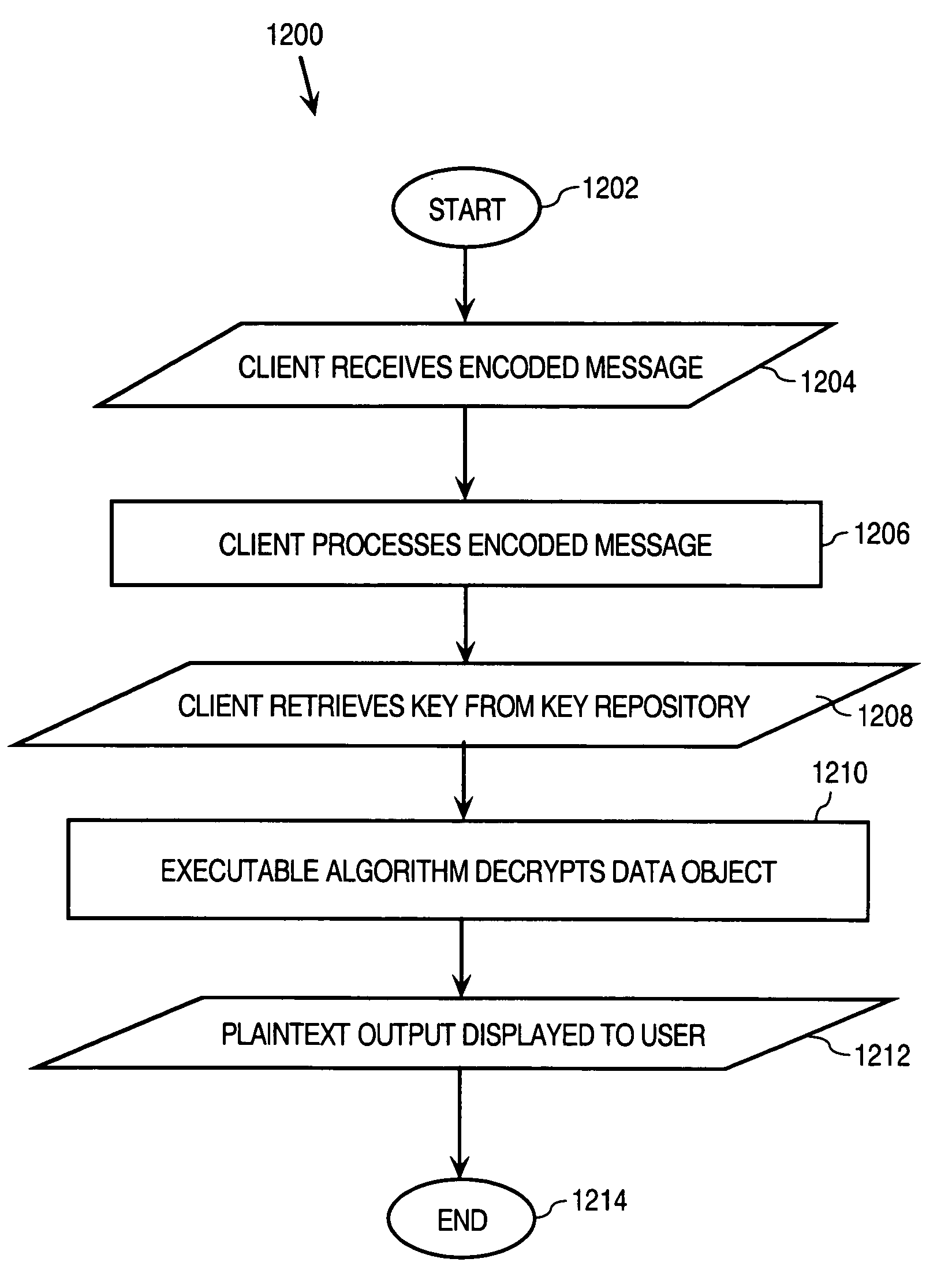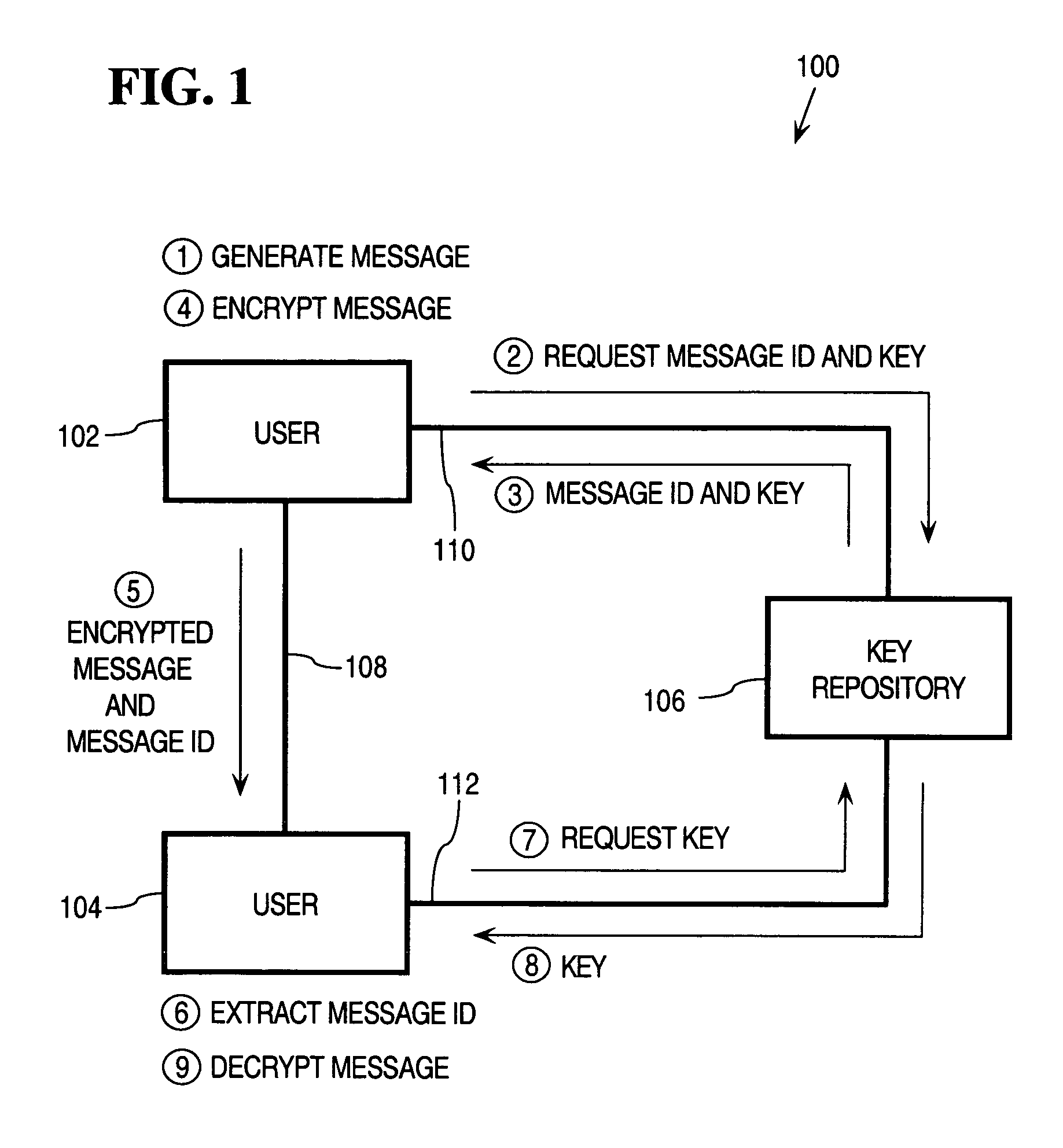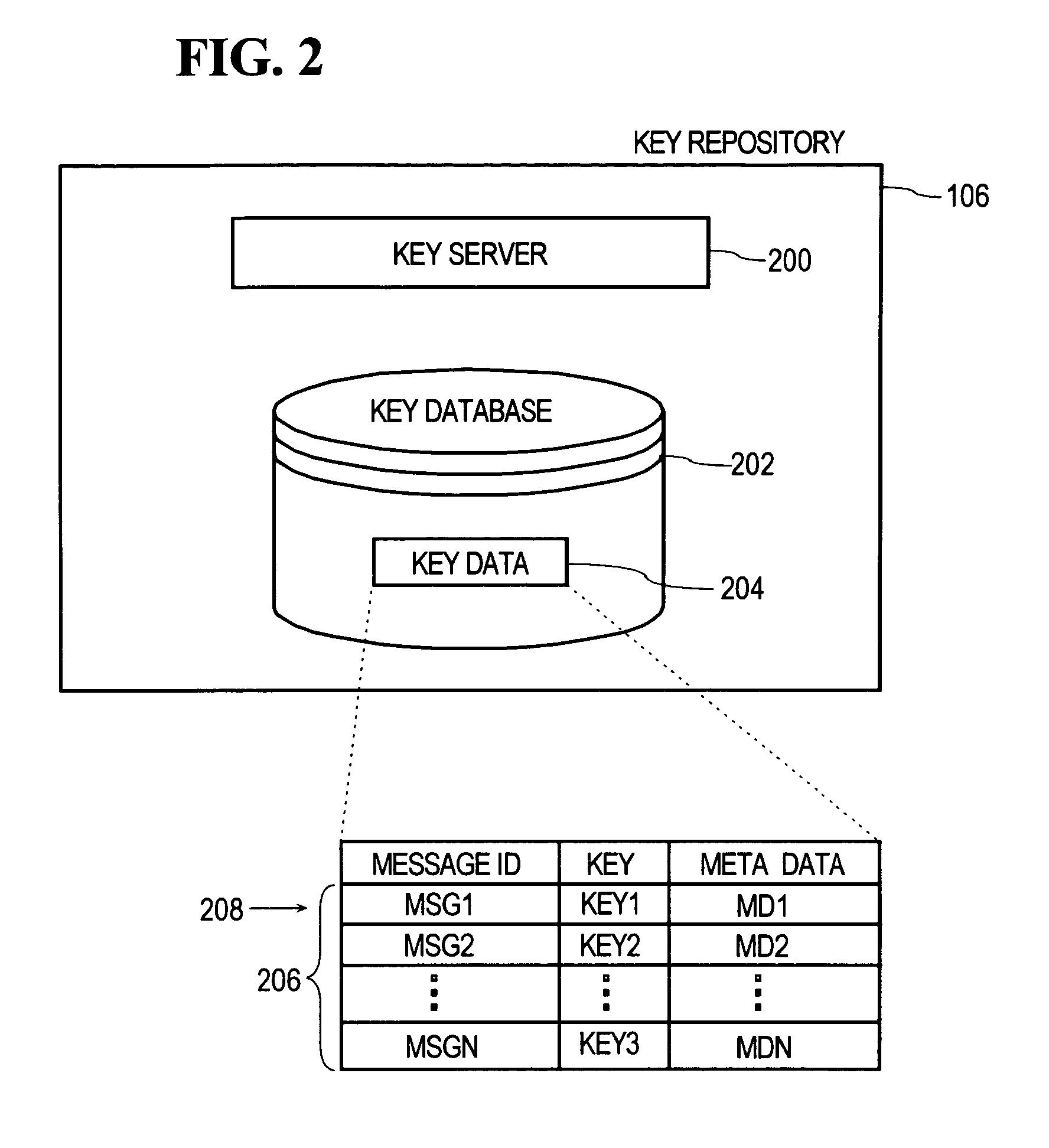Dynamic encoding algorithms and inline message decryption
a dynamic encoding and message technology, applied in the field of networked data processing, can solve problems such as difficult to delete all copies of emails, and important security issues, and achieve the effect of deleting all emails, if not impossible,
- Summary
- Abstract
- Description
- Claims
- Application Information
AI Technical Summary
Benefits of technology
Problems solved by technology
Method used
Image
Examples
Embodiment Construction
[0035]In the following description, for the purposes of explanation, specific details are set forth in order to provide a thorough understanding of the invention. However, it will be apparent that the invention may be practiced without these specific details. In some instances, well-known structures and devices are depicted in block diagram form in order to avoid unnecessarily obscuring the invention.
[0036]Various aspects and features of exemplary embodiments are described in more detail in the following sections: (1) introduction; (2) system overview; (3) rendering disseminated data inaccessible; (4) tracking access to disseminated data; (5) key management; (6) multiple key repository applications; (7) key layering; (8) re-keying; (9) offline applications; (10) message verification; (11) message declassification; (12) message repository applications; (13) dynamic encoding algorithms; (14) inline message decryption; and (15) implementation mechanisms.
1. Introduction
[0037]Controlling...
PUM
 Login to View More
Login to View More Abstract
Description
Claims
Application Information
 Login to View More
Login to View More - R&D
- Intellectual Property
- Life Sciences
- Materials
- Tech Scout
- Unparalleled Data Quality
- Higher Quality Content
- 60% Fewer Hallucinations
Browse by: Latest US Patents, China's latest patents, Technical Efficacy Thesaurus, Application Domain, Technology Topic, Popular Technical Reports.
© 2025 PatSnap. All rights reserved.Legal|Privacy policy|Modern Slavery Act Transparency Statement|Sitemap|About US| Contact US: help@patsnap.com



